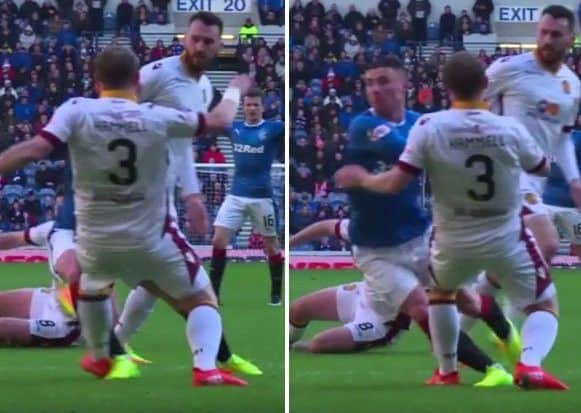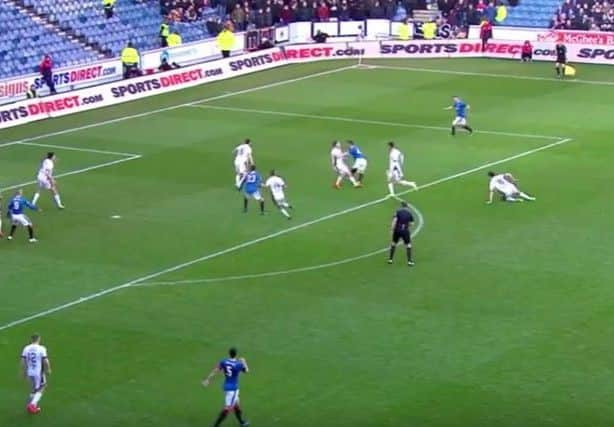Why referee Craig Thomson failed to award Rangers a penalty
This article contains affiliate links. We may earn a small commission on items purchased through this article, but that does not affect our editorial judgement.


First of all, it’s definitely a penalty. Stevie Hammell impedes Michael O’Halloran as he looks to dart past, forcing the Rangers speedster to go to ground. However, as usual with high profile cases involving referees in Scotland, there is a real lack of empathy and understanding as to how the official made the wrong decision.
Advertisement
Hide AdAdvertisement
Hide AdIt’s a strange coming together, which only becomes truly clear from the angle behind the goal. Since O’Halloran is looking to plant off his left foot and cut across in front of Hammell, he’s skims his right foot across the surface after playing the ball before making his cut.


As he does so, Hammell kicks into the skimming right foot, causing O’Halloran to plant it around a yard closer to his standing foot than he wishes. As a result, O’Halloran has to lift his left leg almost over his right one, causing him to lose balance as he begins to go to ground (as illustrated in Image One).
The problem is, Craig Thomson has just about the worst angle for this. From his vantage point, it appears that O’Halloran plants his right foot cleanly and any likely contact would therefore only come from Hammell on O’Halloran’s left foot. Thomson is right in his assessment that no contact was made at this point. When I first watched it at full speed I thought it was a dive, and the main TV broadcast camera offered a similar angle to the one Thomson had.
It’s not a case of bad positioning. As you’d expect from such an experienced referee, he’s in a great position to see all of the penalty area. It’s just that some angles can be deceptive. From his vantage point, it’s much harder to tell if Hammell makes contact.
Some have questioned why the linesman didn’t intervene, seeing as from the sideline it was easier to see Hammell sweeping into O’Halloran’s right foot. However, as you can see from Image Two, there’s a possibility that the assistant referee on the far side is unsighted (at least partially) as Lee Hodson moves across his vision.


Another reason a penalty may not have been given was O’Halloran’s fall. He kicks out with his left leg instead of going straight down. As this likely would have been the leg Thomson was looking for contact from, the added “sell” of the foul would have put further doubt in his mind. He may have thought O’Halloran was looking for a foul.
In such instances, fans and pundits often ask why, if it’s not a penalty, no card is shown for simulation. First of all, not every non-foul in the box involving a player going to ground is a dive. Also, the referee has to be sure it’s a foul to give a penalty. Just because he isn’t sure doesn’t mean he then necessarily has to cite the player for diving. He may be caught in two-minds and therefore unable to commit to a spot-kick.
• Craig Anderson is a former fully qualified referee. He is also the man behind SPL Stats on Twitter.
SEE ALSO

